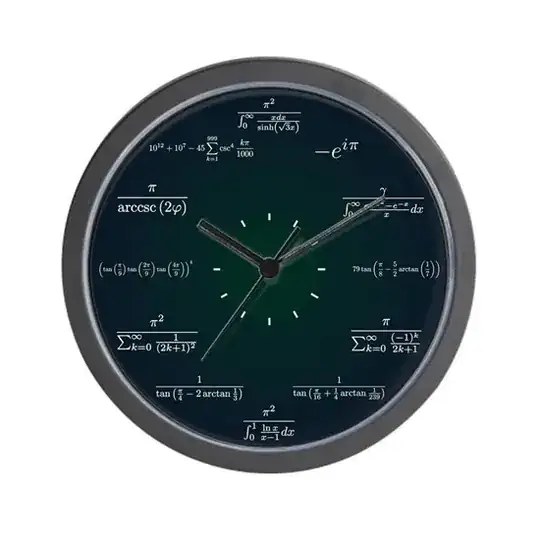How to prove: \begin{equation} 11=10^{12}+10^{7}-45\sum_{n=1}^{999}\csc^4\frac{n\pi}{1000}\;. \end{equation}
1 Answers
Write $\cot\dfrac{n\pi}{1000}=c_n$
Now from Sum of tangent functions where arguments are in specific arithmetic series and Question regarding $f(n)=\cot^2\left(\frac\pi n\right)+\cot^2\left(\frac{2\pi}n\right)+\cdots+\cot^2\left(\frac{(n-1)\pi}n\right)$
$c_n,1\le n\le1000-1$ are the roots of $$\binom{1000}1c^{999}-\binom{1000}3c^{997}+\binom{1000}5c^{995}+\cdots-\binom{1000}{999}c=0$$
$\cot\dfrac{n\pi}{1000}=0,\dfrac{n\pi}{1000}=\dfrac{(2m+1)\pi}2\iff n=(2m+1)500$
$\implies c_n,1\le n\le1000-1,n\ne500$ are the roots of $$\binom{1000}1c^{998}-\binom{1000}3c^{998}+\binom{1000}5c^{994}+\cdots-\binom{1000}{999}=0$$
So, if $d_n=c^2_n$
$d_n,1\le n\le499$ are the roots of $$\binom{1000}1d^{499}-\binom{1000}3d^{498}+\binom{1000}5c^{497}+\cdots-\binom{1000}{999}=0$$
Again $\csc^4\dfrac{n\pi}{1000}=(d_n+1)^2=d_n^2+2d_n+1$
$$\sum_{n=1}^{999}\csc^4\dfrac{n\pi}{1000}=\csc^4\dfrac{500\cdot\pi}{1000}+2\sum_{n=1}^{499}\csc^4\dfrac{n\pi}{1000}=1+2\sum_{n=1}^{499}(d_n^2+2d_n+1)$$
Now $$\sum_{n=1}^{499}d_n=\dfrac{\binom{1000}3}{\binom{1000}1}$$
$$\sum_{n=1}^{499}d^2_n=\left(\sum_{n=1}^{499}d_n\right)^2-2\cdot\dfrac{{\binom{1000}5}}{\binom{1000}1}$$
- 274,582
-
There are no degree gaps in the polynomial for $d$. Thus would you not get $$\sum_{n=1}^{499}d_n=\dfrac{\binom{1000}3}{\binom{1000}1}, ~\text{ and }~ \sum_{n=1}^{499}d^2_n=\left(\dfrac{\binom{1000}3}{\binom{1000}1}\right)^2-2\cdot\dfrac{{\binom{1000}5}}{\binom{1000}1}=\dfrac{(999\cdot998)^2}{6^2}-2\dfrac{999\cdot998\cdot997\cdot996}{120}?$$ – Lutz Lehmann Aug 03 '19 at 07:04
-

The fact that he collaborated and gave the source (that was the only thing required in the comments by others), looks enough imo.
– Zacky Aug 03 '19 at 12:23